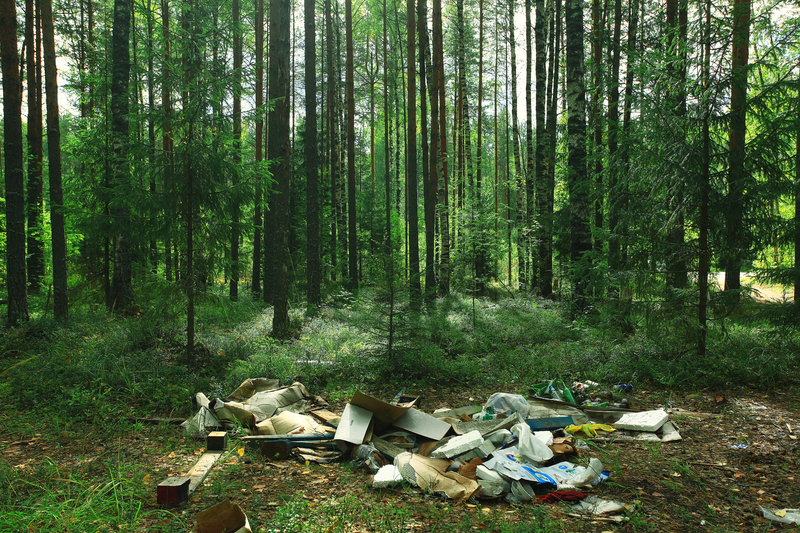Clutter Removal Solutions Designed for Hoarding Challenges
Hoarding is more than just a bad habit or a simple reluctance to discard items; it is a complex behavioral issue that impacts the lives, health, and safety of millions of people globally. If you or a loved one struggles with excessive collecting and clutter, finding effective clutter removal solutions for hoarding can be transformative. This comprehensive guide dives into actionable strategies, expert recommendations, and support resources to address even the toughest hoarding challenges.
Understanding Hoarding Disorder
Before exploring specific clutter removal solutions, it's crucial to grasp what hoarding disorder entails. Unlike typical clutter, hoarding involves an intense psychological compulsion to accumulate and keep items, regardless of their actual value. Some important facets of hoarding include:
- Difficulty discarding possessions
- Extreme anxiety about getting rid of items
- Living spaces rendered unusable due to piles of clutter
- Emotional attachment to objects, regardless of usefulness
Hoarding behaviors often have roots in trauma, mental health conditions like OCD, depression, or anxiety, and complex family dynamics. Any clutter removal plan for hoarding requires sensitivity and a tailored approach.

Why Clutter Removal is Essential for Hoarders
- Physical Safety: Cluttered homes pose fire hazards, trip risks, and can impede emergency responders.
- Health: Piles of items can harbor dust, mold, pests, and mildew, leading to respiratory issues and infections.
- Mental Well-being: Persistent clutter can heighten stress, shame, depression, and social isolation.
- Quality of Life: Extreme hoarding severely limits living space, making usual activities--sleeping, cooking, bathing--nearly impossible.
A unique, compassionate approach to clutter removal for hoarding disorder can restore health, dignity, and peace of mind.
Step-by-Step Clutter Removal Solutions for Hoarding Situations
Every hoarding case is unique, but following a staged, non-judgmental, and professional process is vital. Here is a detailed guide for safely and effectively managing hoarder cleanup:
1. Assessment and Planning
Start with a thorough assessment of the property and the extent of the clutter. Consider:
- The number of cluttered rooms affected
- Access to essential amenities (bathroom, kitchen, exits)
- Presence of hazardous materials, pests, or mold
- Physical and emotional state of the individual involved
2. Assembling the Right Team
Hoarding situations often require more than simple house cleaning. Your clutter removal for hoarders team should ideally include:
- Professional Declutterers: Specialists trained in hoarding situational cleanup
- Mental Health Experts: Therapists or counselors to provide emotional support
- Junk Removal Services: Licensed and insured providers to handle heavy lifting and hazardous items
- Supportive Friends or Family: Only if the individual is receptive
3. Creating a Personalized, Judgment-Free Plan
Work with the hoarder to create a step-by-step clutter removal strategy:
- Set realistic, achievable goals one room or area at a time
- Establish ground rules for what can be saved, donated, recycled, or discarded
- Schedule regular sessions to avoid overwhelm
- Adjust tactics based on mental health needs and responses
4. Safe Sorting and Disposal
Encourage a methodical approach to sort and filter items:
- Use labeled bins: Keep, Donate, Sell, Recycle, Trash
- Handle sentimental objects with care--photographing items may help with letting go
- Wear gloves and masks for dusty or unsanitary environments
- Follow regulations for disposing of hazardous waste (batteries, paint, chemicals)
5. Deep Cleaning and Sanitization
Once clutter is removed, a deep cleaning of floors, upholstery, walls, and vents is essential. This will improve air quality and restore a sense of comfort and safety.
6. Preventing Re-Cluttering
Work with professionals to establish organizing systems and coping strategies, such as:
- Monthly maintenance cleaning schedules
- Mindfulness and stress-reduction techniques to resist acquiring new items
- Behavioral therapy for long-term changes
- Support group involvement for ongoing encouragement
Professional Clutter Removal Services for Hoarding
Not all cleaning companies are equipped for the sensitive, labor-intensive nature of hoarding cases. Choosing a clutter removal company specializing in hoarding ensures:
- Confidentiality and non-judgmental staff
- Proper heavy-duty equipment and protective gear
- Sensitivity to emotional triggers and attachment
- Compliance with state and local disposal regulations
When researching providers, look for terms such as "hoarder cleanup specialists," "compassionate decluttering," or "hoarding remediation experts." Read reviews and check for certifications from the National Association of Professional Organizers (NAPO) or the Institute for Challenging Disorganization (ICD).
Community and Online Resources for Hoarding Help
Alongside physical clutter removal, hoarding relief is greatly aided by community and online resources, such as:
- Therapy and Counseling: Cognitive Behavioral Therapy (CBT) specifically for hoarding
- Support Groups: Both in-person and online, like Hoarding Cleanup and Children of Hoarders
- Local Agencies and Social Services: For elderly or at-risk individuals, certain agencies offer home assessments and intervention options
- Self-Education: Books, podcasts, and webinars on hoarding disorders and clutter removal strategies
Tips for Maintaining a Clutter-Free Home After Hoarding Cleanup
To ensure lasting freedom from extreme clutter, it takes ongoing effort and vigilance. Here are some expert-endorsed tips:
- Start Small: Continue practicing decluttering on a daily or weekly basis, focusing on one surface or drawer at a time.
- Adopt the "One In, One Out" Rule: When you bring home a new item, commit to letting go of something of equal size or purpose.
- Use Storage Wisely: Utilize clear bins, labels, and vertical storage solutions to keep things organized and visible.
- Seek Ongoing Support: Don't hesitate to reach out to professional organizers or therapists if old hoarding tendencies resurface.
- Celebrate Progress: Mark milestones with small rewards to reinforce positive change.
The Emotional Journey: Compassion First
It's important to recognize that hoarding cleanup and clutter removal is more than a physical process; it is an emotional and psychological journey. Many hoarders wrestle with shame, fear, and grief as they part with possessions. Compassion, patience, and respect are absolutely essential every step of the way.
If you're assisting someone with a hoarding challenge, consider the following:
- Listen without judgment--validate emotions and struggles
- Avoid forced cleanouts or threats, which can cause additional trauma
- Encourage professional intervention
- Frame clutter removal as a positive step toward empowerment and self-care
Modern Tools and Technology for Clutter Management
Today's digital tools can play a valuable role in clutter management and long-term organization for former hoarders. Consider integrating:
- Mobile Apps: Organization and task management apps help schedule cleanup sessions and track progress
- Inventory Systems: Create digital records of belongings to reduce the need to keep physical items
- Virtual Support: Access to online coaching, teletherapy, and virtual support groups
- Smart Home Devices: Use reminders and alarms to maintain cleaning routines

What to Avoid During Hoarding Clutter Removal
While the intention to help is noble, certain actions can backfire when working with hoarding disorder cleanup:
- Rushed Cleanouts: Abrupt removals can result in trauma and mistrust
- Shaming or Criticizing: Hoarding is rarely about laziness--it's often a response to mental health struggles
- Discarding Without Consent: Always involve the hoarder in decisions about what to keep or toss
- Ignoring Emotional Signals: If distress escalates, pause and reassess the approach
Conclusion: Your Path to a Healthier, Happier Home
Dealing with clutter removal for hoarding challenges requires a blend of practical strategies, professional help, and deep empathy. The journey may be long and often complex, but with the right solutions and sustained support, even the most daunting clutter can be conquered.
Whether you are a professional organizer, a family member, or someone struggling with hoarding yourself, remember: small, steady steps can make a tremendous difference. Reach out for help, honor each accomplishment, and focus on the hopeful future a decluttered space can offer.
For more clutter removal solutions for hoarders, explore local support groups, certified cleanup providers, or mental health services in your area. A safer, healthier, and more organized life is possible--one cleared item at a time.